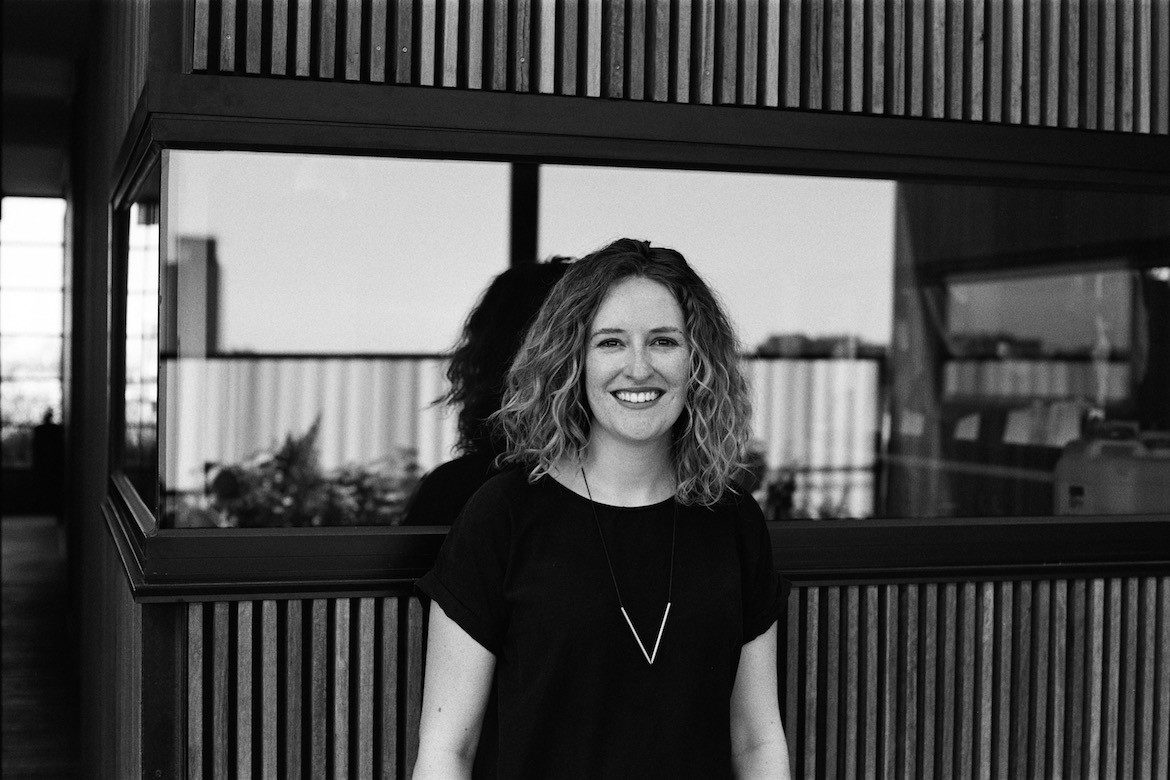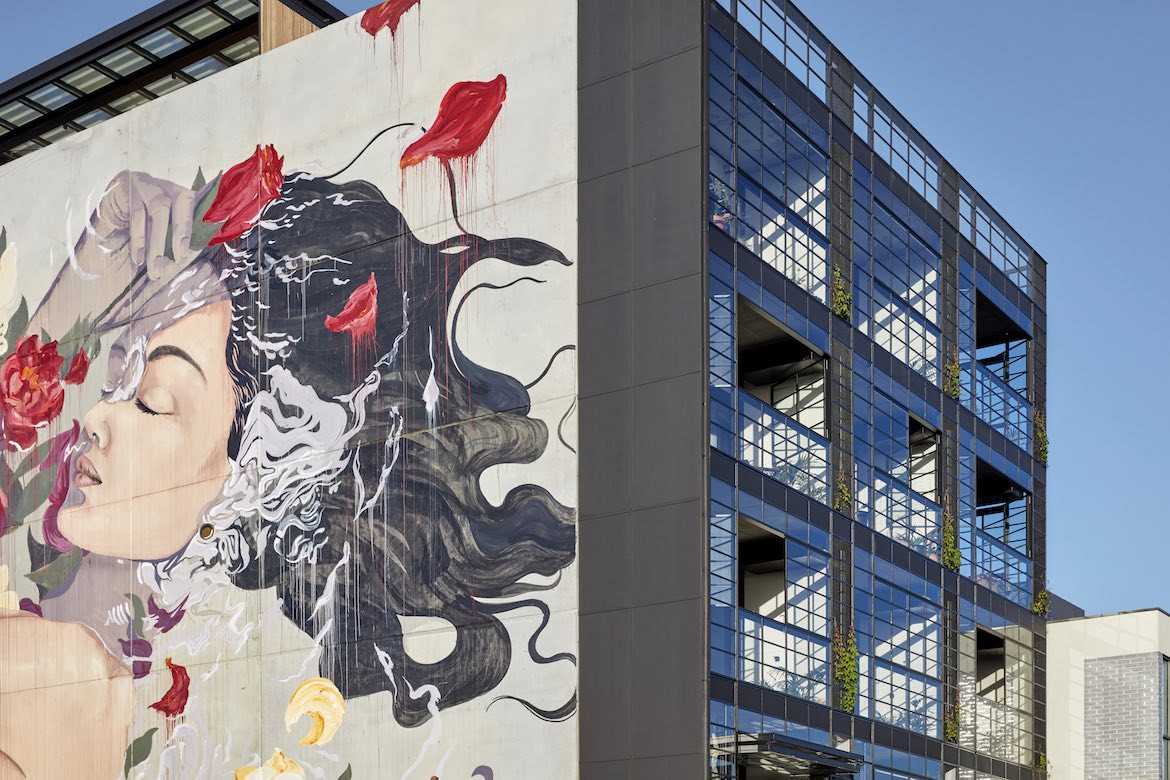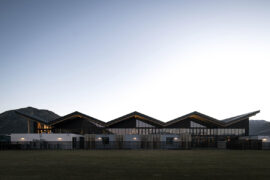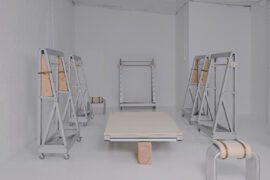We talk with Fairley Batch on how Breathe is leading the way in sustainable multi-residential design and innovating to reshape ideas of development in Australia.

October 18th, 2021
When I catch up with Breathe’s director of architecture Fairley Batch, she’s modest about the significant impact the studio is having on Australian developments. “We do what we can to make the world a better place,” she says. It’s this mentality that is inherent at Breathe Architecture, where the team’s commitment to sustainability is at the core of their work. Famed for its highly praised Nightingale projects, Breathe’s ethics extend from its hiring processes, to innovative green power developments, and right through to client and industry interactions.
The Commons, which “served as a catalyst for all of the Nightingale Housing projects,” was inspired by the German baugruppen model, in which architects, owners and investors come together to make developments happen, rather than having a separate developer.

Nightingale 1, photography by Peter Clarke
“We thought, ‘how hard could this be?’” laughs Batch. “It was hard, but ultimately, it was successful.”
Off the back of The Commons, Nightingale was developed to deliver beautiful, sustainable apartments at cost price. The not-for-profit organisation exists to deliver homes that are socially, financially and environmentally sustainable.
The Nightingale Housing projects “aim to deliver carbon neutral buildings in operation,” says Batch. “They are sustainable in energy consumption, they are homes for people and housing for communities, and most importantly, they are delivered at cost, which is really quite unusual for developers who ordinarily just try and make as much money as possible and pocket the rest.”

Nightingale 1, photography by Peter Clarke
“There’s some pretty fundamental ideas to creating an affordable home and the number one is building less and giving more,” says Batch.
Multiple factors are involved in achieving this, says Batch. First, finding an ideal location that’s close to a train line can reduce the number of parking spaces or omit them altogether – as was done in The Commons and Nightingale 1, reducing excavation and basement construction costs. Unnecessary materials are avoided in favour of the “honest and robust” materials at the core of the buildings, such as exposed concrete and recycled materials. Simple measures, like eschewing marketing and real estate agents also keeps the costs down.
These measures, along with the communal aspects of the buildings, have been winning factors for the residents, who “love the warmth and the natural robust materials and the reductionist qualities,” says Batch.

Bathroom in Nightingale 1, photography by Peter Clarke
The living spaces per apartment are made larger by not including second bathrooms or individual laundries, in favour of the rooftop communal laundry, a move that Batch tells me has had a positive community knock on effect.
“A lot of people at The Commons first met when hanging washing up together on the clothesline. There’s no quicker way to get to know your neighbours than chatting while hanging up your smalls,” says Batch.
To call Breathe an architecture studio almost feels too simplistic. While the team’s iconic Nightingale Housing projects have set a precedent for sustainability and ethically priced residences, that’s just the tip of the iceberg.

Nightingale Village Render
In response to the industry’s excessive carbon emissions, Breath conducted extensive research and “around 100 meetings with different providers,” to develop a GreenPower embedded network that feeds 100 percent green power into the properties.
“Research tells us that the construction industry accounts for about 40 percent of energy related carbon dioxide emissions,” says Batch.
As one of the founding signatories for Architects Declare, a program endorsing climate biodiversity, Breathe also actively educates and advocates on the importance of going carbon neutral. “We’re trying to educate our clients, our builders and our collaborators to remove gas from projects, switch to 100 percent certified green power, to conduct carbon audits and then offset their carbon emissions. More and more people are undertaking the process, which is great,” says Batch.

Render of Four Pillars
Currently, Breathe is working on Nightingale Village alongside five other award-winning architects to develop Australia’s first carbon neutral residential precinct. Nightingale Bowden in Adelaide is also on the way, featuring around 40 percent social housing. On the hospitality side, it’s also working on Four Pillar’s new world class gin distillery, a project that Batch says has strongly aligned values with Breathe due to the brand’s commitment to sustainability and minimising its carbon footprint.
Breathe and Fairley Batch are on a mission to help decarbonise the industry by 2030, and it’s time to get on board.
Breathe
breathe.com.au
INDESIGN is on instagram
Follow @indesignlive
A searchable and comprehensive guide for specifying leading products and their suppliers
Keep up to date with the latest and greatest from our industry BFF's!

At the Munarra Centre for Regional Excellence on Yorta Yorta Country in Victoria, ARM Architecture and Milliken use PrintWorks™ technology to translate First Nations narratives into a layered, community-led floorscape.

For a closer look behind the creative process, watch this video interview with Sebastian Nash, where he explores the making of King Living’s textile range – from fibre choices to design intent.

In the New Year, architecture will be defined by its ability to orchestrate relationships between inside and outside, public and private, humans and ecology, and data and intuition.

Warren and Mahoney’s The Mill in Queenstown blends architecture, wellbeing and landscape, creating a transparent training facility.
The internet never sleeps! Here's the stuff you might have missed

Melbourne-based Studio Edwards has designed Shift+Space, a modular system under the banner of ‘adaptive retail architecture’. Ben Edwards tells us more.

At the National Wool Museum, a new exhibition traces the evolution of Godfrey Hirst and its long-standing role in shaping Geelong’s industrial and design identity.